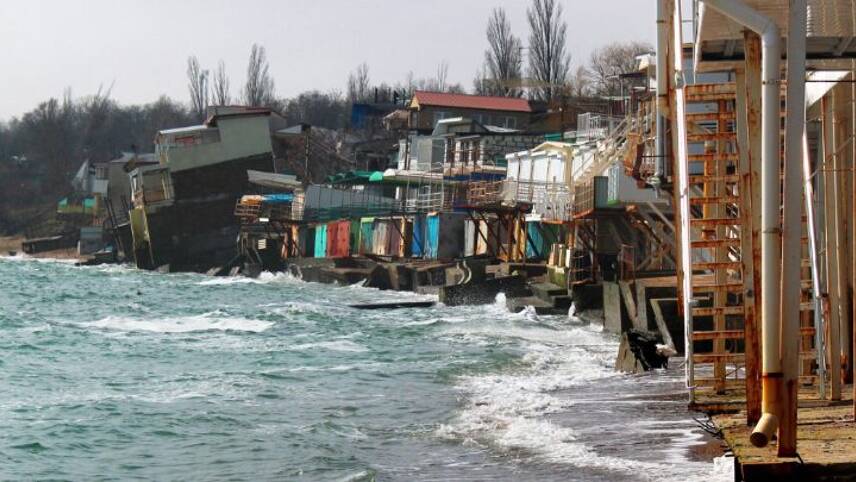Register for free and continue reading
Join our growing army of changemakers and get unlimited access to our premium content

The report forecasts a 20% increase in the number of people exposed to coastal erosion globally
Published today (28 February), the Sixth Assessment Report from the IPCC’s Working Group 2 warns that historic failures to cut emissions and slow progress on adaptation efforts have left more than 3.3 billion people – half of the world’s population – “highly vulnerable” to the impacts of the climate crisis.
It predicts that the world is likely to exceed 1.5C of warming on pre-industrial temperatures in the “near-term” on the current trajectory. The report does state that the temperature could be brought down in the future if “transformational” action is taken, but even a temporary breach of 1.5C would be fatal for millions and wipe billions off of the global economy, largely due to extreme weather events and public health impacts.
A long-term, permanent rise above 1.5C is looking increasingly likely, however. The report warns that the window of action for delivering a “livable” future for billions of people is closing faster than anticipated.
In a heated world, long-term trends will include greater levels of migration; a widespread mental health crisis; increased transmission risks for food-borne and water-borne disease; water scarcity and irreversible biodiversity loss. To the latter, it states that the proportion of species facing a high risk of extinction could be held to 3% in many regions in a 1.5C world. But, in a 2C world, this proportion rises to 18%. For 2C, it’s 29%. For 3C, it’s 39%.
These negative impacts, the IPCC states, will not be felt equally. The most vulnerable communities and ecosystems, including coastal communities, small island states and places already grappling with food and water insecurity, will be the worst hit. In most cases, these regions have contributed minimally to human-caused emissions.
A headline finding is that the population potentially exposed to coastal flooding will increase by 20%, against a 2020 baseline, if the global mean sea level rises by 15cm. This is extremely likely in a 2C world. But no areas are ultimately immune to all climate impacts.
The IPCC’s chair Hoesung Lee has called the report “a dire warning about the consequences of inaction”. UN Secretary-General Antonio Guterres called it a further “code red warning for humanity”.
Course of action
Nonetheless, the report does conclude that there is still time to act. It outlines how there are ways to deliver decarbonisation and adaptation efforts that build in resilience – and approaches that ultimately result in unintended consequences.
Some regions, it states, are already past the point of effective adaptation, due either to “hard limits” like coastal erosion or regular flooding, droughts or wildfires – or to “soft limits” like costs.
Others can and should receive more support to deliver holistic, joined-up approaches to adaptation, the report states. It outlines several case studies of successful projects submitted to the Panel since 2014. These include the development of low-carbon and reliable public transport networks, the retrofitting of existing buildings, the development of resilient new buildings, water system redesigns and local renewable energy generation.
Examples of what not to do that are detailed include the installation of sea walls. The report explains how they may protect one location from flooding and coastal erosion, they are likely to cause problems for other areas further down a coastline. Moreover, this infrastructure is typically carbon-intensive in terms of material use and construction.
On decarbonisation, the report emphasises the IPCC’s previous assertation that the world will have the best chance of capping warming at 1.5C- or ensuring the breach is temporary – by at least halving net emissions by 2030 and bringing them to zero by 2050 at the absolute latest.
Report context
The report forms the second part of the IPCC’s sixth reporting cycle. The first part was published last August and looked mainly at temperature forecasts, concluding that it is “more likely than not” that the global temperature increase will hit 1.5C by 2040. Current temperatures globally are, on average, 1.1C above pre-industrial temperatures.
The third part of the reporting cycle is due in April. Then, the IPCC will outline, in more detail, how emissions reductions will need to be delivered. It will look at the level of decarbonisation required by specific nations and business sectors.
Input from more than 250 climate scientists representing more than 65 nations has been included in today’s report. Discussions took place earlier in February and the final text was signed off at the weekend.
The Ukrainian delegation left the two-week negotiations online early due to the invasion from Russia. They were dialling in virtually and, on Friday (25 February), were asked to take shelter.
Leaving a final statement with other attendees, the delegation said: “Human-induced climate change and the war on Ukraine have the same roots – fossil fuels – and our dependence on them.”
The Russian head of delegation, Oleg Anisimov, reportedly apologised to delegates and observers for his national government’s actions.
Click here to read edie’s roundup of green economy reaction to today’s IPCC report.
THIS IS A BREAKING NEWS STORY. EDIE WILL SHORTLY BE PUBLISHING A DEEP DIVE, OUTLINING THE IMPLICATIONS OF THE IPCC’s FINDINGS FOR THE PRIVATE SECTOR.
Sarah George


Please login or Register to leave a comment.